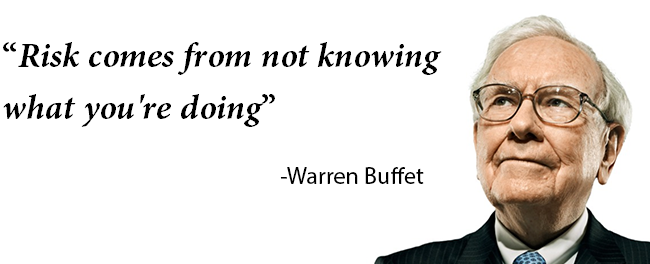
Trading Plan
Planning is crucial for every business success. Every professional undergoes a planning process to lay down a foundation for future course of actions. So, to get start with trading you need a proper plan, a plan to design a road map to follow to achieve your trading goals.
The secret for trading success is when a trader plans for trading as a business rather than an activity to make “quick money”. Many enthusiastic aspiring traders enters the market without a proper plan as they fail to understand that trading is a business which needs to be run “only” on the business lines. They start trading the markets and commit the same mistakes as incur by most of the traders so they lose money or go broke and market throws them out from the trading world “forever”.
The trading plan must be designed so simple that it can be written on paper to help develop a clear view about all the aspects of trading business well in advance i.e. Money or Capital or Risk Management, Psychology Management, and Trade Management. It should be designed such that it can be tested in the real markets and can be improved & modify after the evaluation process.
So, this is the very time for you to answer some of the very basics of getting started with trading:-
Your trading goals? The capital you will be starting with? Sacrifices that you`ll have to make? Deciding the markets and time frame to trade? Planning the system of Entry & Exit? And preparing a contingency plan if the market goes against you? And many many more….
We have distributed this section in three different phases of the trading activity to help you design your system of trading as precise as possible.
Before the Trade (Trading Plan)
During the Trade (Execution & Trade Management) and, lastly
After the Trade (Evaluation Stage)
Before Continuing on further, Do Read the article 12 Step-wise Trading Rules for New Traders to be Safe in the Market outlining the unavoidable rules required to be successful for a Trader.
Before the Trade
Long Term Vision
The objective of every new aspiring trader should be to have a “Long Term Vision” to attain the market knowledge, learn and understand the wide aspects of trading business, frame up trading rules which can help you learn the art of successful trading rather than being bothered for making short term money as and when you start. During your initial learning and trading days, mistakes will be there. Therefore having a long term vision will help you keep on going and learning from these mistakes. As these mistakes will in turn help you understand what works and what not works in the market and refine your trading plan, entry setups, risk management, capital protection rules, exit strategies, etc and inturn help you to a “Great Trader”.
Capital
The first and foremost asset for any trader is the Seed Capital he/she starts with. Beginners should not fall under the prey of starting with a big account to make “Quick Money”. New traders should start with the Minimum Capital that is required to open a trading account with a broker then as and when your knowledge and experience grows and if your seed capital shows you positive results then you can add up to your responsibility to manage and trade a big account.
Read our Article Have you ever Wondered why Starting Small always Work in Trading Business? outlining the benefits of starting with a small account.
Division of Capital (Diversification)
Never put all of your eggs in a single basket; this is the only best thought to help you learn the importance of diversification. Traders should divide their capital amongst stocks, futures, and index etfs and never put more than 10% of the capital in a single stock or market.
- Stocks: – Beginners should focus on analyzing and trading the stocks categorized as the Top companies of Indian Economy. Nifty50 has the top 50 stocks of Indian economy; Next 50 top capitalized companies are in the Index Junior Nifty; Or if someone wants exposure to banks then check stocks under BankNifty or lastly stocks under CNX 500. (Attached is file for your reference)
- Futures: – Advice for beginners is to avoid trading futures during their initial stage of trading as they are leveraged product. For those trading the markets from some time can track and trade the futures market after you know it well.
Equity Future traders generally have two options to trade – Stock Futures or Index Futures.
Check our article on Gettting Started With Trading – What to trade?
Number of Markets to Trade
Any trader should develop a deep understanding of the market or stock you are interested to trade or invest in. There are many things which happens in a market, so if you really want to trade big you have to know what the market is doing. Understand the market so that it starts to talk to you by itself telling you where it wants to go. Its very very very important. Always Know Your market. The prescription of success in the trading business is to stay focused, and know your Market. Know everything you can about a market rather small things about many markets. So, every trader should limit the number of stock or market he trades and stay focused on some markets or stocks. Knowing a market or a stock in deep will give the trader/investor a positive edge that will help him to manage his risk wisely, be safe and remain in the market forever.
So, always have not more than three or four markets you are interested in. So, start analyzing the markets on bigger as well as smaller charts and try to understand the habits and characteristics of the market you are interested in. Back-test each technical tool you know to “Your Market” and see what really works for you. Try to filter out the tools which you feel fits under your belt and comfortable zone.
Read: Part V – Getting Started With Trading – Know Your Market
So, if you are interested in equity market, Index Futures generally should be preferred to put on all your time, efforts and research like Nifty Futures or Bank Nifty Futures.
Visit What is BankNifty Index (CNX Bank Nifty Index) & How to trade BankNifty? to understand and get into the dynamics of BAnk Nifty Index & How to Trade Bank Nifty Futures? to help positional and day traders learn, frame up trading plan and rules for trading BankNifty Futures.
Protection of the Seed Capital
Capital is an important asset for a new trader and utmost care must be taken care during the initial days of trading to protect the seed up capital. Capital protection is not just a need but a necessity for a traders long term survival and performance and the only way to guard your capital is by using stop losses. Using strict stop losses will help you to test your trading system and will give you more trading chances to refine your strategy during your learning days.
Whenever you buy or sell short a market, always protect your capital with a stop loss. Stop loss should be 2-3% of capital allocated to a market or a stock (Remember we had a rule that we will not put more than 10% of our capital in a stock or market).
Stop losses are another way to determining and deciding the trades to take and avoid. Many traders avoid some trades as there actual stop losses are far away from their trade entry price thus in turn not under the criteria of say 2-3% of their total capital.
How to buy?
The only way to make big profits in the market is by the principle of pyramiding. This requires a trader to buy a stock or a market in successive lots than in a single bunch. Buying when the market crosses resistance areas or when the market shows you a profit. Never average a trade downwards. Always buy the next lot at a price higher than the last buying price. This will make sure that we are going with the trend of the market. Pyramiding can be done in 3 lots by buying 5% then successive 3% followed with the remaining 2%.
Professional traders always evaluate profile of any trade on the basis of how much they are going to lose with how much profits they can make from that very trade? Even a trade who has a 50% accuracy with 2:1 reward risk trades profile has a resultant of generating positive returns on his portfolio or trades.
Check Article – How to buy stocks (Pyramiding)
Time frame to trade
Beginners should avoid day trading as this act of trading requires a lot of experience and psychology management. One should focus and prepare only for the positional trades to get an understanding about the working nature of the market. So always start with big charts because small moves are the part of the big moves. It s always important to follow the big players. So, Always Follow The Market. When market is showing bullishness – Go With It.
Always start with analyzing and finding trades on the big time frames (Daily or Weekly Chart) then get into the intraday charts 5 min, 15 min or 30 min and keep a close tab on the market movement to get a closer entry and with small risk.
Rules to follow
Traders should define the rules that they will be following during the course of their trade. Rules which are not meant to be broken.
No trading on hope or news (Psychology Management)
No down shifting of stop loss
Never average a trade downwards
Whenever in confusion – Get out
Follow your plan
Lastly, never break a rule or you will go broke
Read Ten Unavoidable Rules for Aspiring Traders to be Successful & 12 Step-wise Trading Rules for New Traders to be Safe in the Market. These set of rules are not mere theories rather they are the practical reasons of the success of the biggest successful traders the world has ever seen.
Planning your Execution & Trade Management
After deciding the amount of the capital to start with and diversify it in the different markets and stocks, next important decision the trader has to take is predetermining and planning the execution process i.e. Place to enter, how to pyramid and finally deciding the system of money management to follow i.e. where to place your stop losses
How much risk to take – SL should be max 2-3% of the allocated trading capital.
o 2 Reasons :-
- Capital Protection: is to restrict your losses to a small proportion of your capital then shifting your stop loss to protect your capital getting out at breakeven trade.
- Profit Protection – Never let a profitable trade run into a loss, shifting to protect your profits
Article – Importance of Entering at the right place
Planning your Exit
If you are following a target based exit plan then stop losses must be trialed to restrict your losses and exiting if the market achieves your target price.
Next strategy is to trial stop losses and going with the life of the trend, this can only be adopted when you are expecting the market or stock to move very strongly.
Read our Article: Stop Loss Strategy
At the time of the trade (Execution stage & Trade Management)
After finalizing the stock to trade and spending a lot of efforts in planning for the trade and deciding the parameters well in advance on paper. The time is here for the test now – FACING THE REAL MARKET. This puts trader’s skills and experience at real test.
Executing as per the plan is an important element of trading as psychology, and trade preparation plays an important role in right execution. Executing the trade as per the plan i.e. price and quantity
- Or not executed (Fear)
- Planned to buy 100 shares, was able to buy 50 shares
- Stop loss planned was 2 points, taken a stop loss of 3 points
Trade Management
- Maintain your SL (Capital protection) – if we are wrong or when we are not with the market – Trade will be over here.
- Not buy all at once (Pyramiding – how to buy stocks) 5+3+2 (take high risk at the lowest point)
- Never Average down a stock – If we are wrong, get out.
- Don’t fight with the stop loss
- Never change your stop loss till you have sufficenet facts to justify it (Nut in beginning, never do it) – i.e. if we are wrong, get out quick – delays could be dangerous
- Profit protection – if we are right
- Exiting as per the plan – shifting SL to swing lows (When markets are trading strong)
Reducing the gap as far as possible between what you planned and what you executed.
After the trade (Evaluation)
Work of a trader doesn’t get over after the trade completion. Either you had a super protibale trade or a real bad one, efforts are needed here to give your trade and skills a rating.
This will help you pan and refile your things for future, to evaluate the mistakes done or felling the psotiive ot writing down our learning.
2 things –
- Difference between the planned and execution (Planned to buy at 80 bought at 82)
- Where you planned to exit and where you exit (Liquidation)
- refining the strategy – what if you had consecutive losses.
Download our Tradesheet to check the parameters to evaluate the difference between the trading plan and execution & modify things accordingly.
A well defined trading plan is very crucial for the success of a trader as planning laid down predetermined rules that a trader must be following while executing a trade and helps avoid trading on hope or fear or on emotional impulse which puts the odds of the success in the favor of the trader. A considerable time is required to define a trading plan based on each traders trading objective and risk profile. A well written trading plan helps make comparison and future modification process simpler and easier.
Advice for New Traders:-
Beginners can perform all this via Paper Trading
Don’t lose Your Patience as results will definitely come sooner or later
Write down your trading plan on paper
Follow your plan and never break your rules or you will go broke
Don`t lose your Faith as market will open every weekday
Don’t be too anxious to trade Big in starting
Learn & then Trade, and Lastly
Don’t get hung up on any new thing too early
KNOWLEDGE IS POWER!




